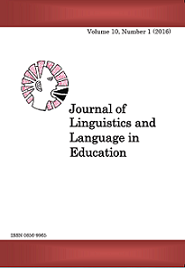The Morphology of Plant Names in Chasu
Abstract
The study on which this paper is based examined the morphological structure of plant names in Chasu, a Bantu language spoken by the people living along the Pare Mountains in North-eastern Tanzania. The study was conducted in selected rural areas in the districts of Same and Mwanga in Kilimanjaro Region, Tanzania. The data were collected using free listing, field interview (a walk €“in €“the €“woods interview) and written texts, which contained Chasu plant names. The study found that the morphological structure of Chasu plant names is composed of a noun class prefix and a noun stem. It also found that the majority of plant names in Chasu are found in the noun class 3/4 pair, with 50.8% of the analysed plant names being found in that pair. Other plant names are found in the noun classes: 5/6 (25.8%), 9/10 (10.1%) and 7/8 (9.7 %). Only a few plant names are placed in noun classes 11/6 (1.9%) and 12/13 (1.7%). The paper reveals further that there are different strategies that speakers of Chasu use in naming plants including compounding, reduplication, descriptive phrases, borrowing, loan translation and semantic extension. The paper recommends further research on the semantics of plant names in Chasu.
Keywords: Chasu, plant names, noun classes, noun stems and plant naming strategies
Downloads
Published
Issue
Section
License
Copyright © by Department of Foreign Languages and Linguistics, University of Dar es Salaam
All rights reserved. No part of this publication may be reproduced or transmitted in any form or by any means, electronic or mechanical, including photocopying, recording, or any information storage or retrieval system, without permission in writing from the publisher, except for short extracts in fair dealing, for research or private study, critical scholarly review or discourse with an acknowledgement.


